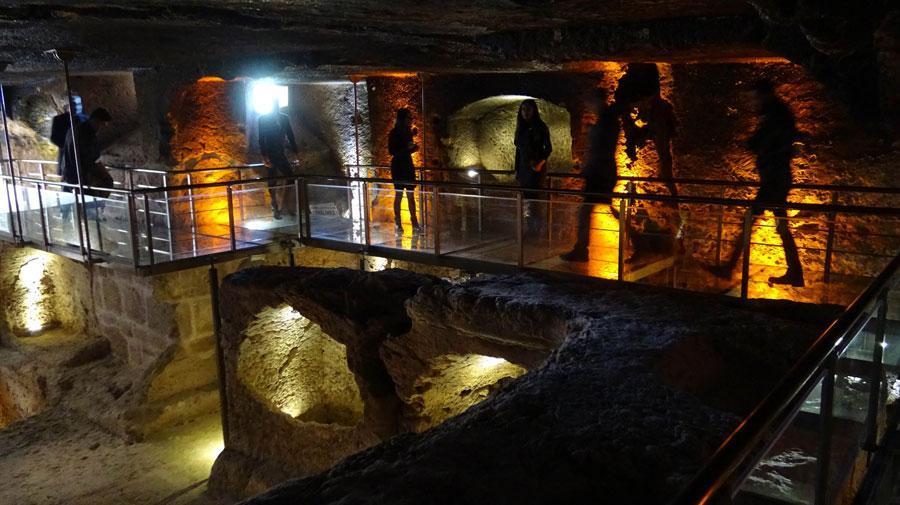
A gallery grave dedicated to Roman warriors who died thousands of years ago in battles found in the ancient city of Dara in Turkey’s southeastern border province of Mardin is unprecedented and unique, officials have said.
Following anthropological examinations on the bones of some 3,000 people, which were stored thousands of years ago with the belief that they would “resurrect” someday, in the gallery grave, located 30 kilometers from central Mardin, have revealed the average age of humans was as young as 45 back then.

According to scientific research, Dara was founded in 507 by the attempts of the Roman Emperor Anastasius I (491-518) as a garrison city in order to protect the eastern border of the Eastern Roman Empire against the Sassanid. Following works of blocks being removed from stone quarries, which are located in the vicinity (immediately west of the city), the city has been surrounded by a four-kilometer wall.
The city was built as an “inner castle.” To date, excavations in the city and outside of the city walls unearthed the remains of structures such as churches, palaces, an agora (bazaar), cisterns, houses, water channels, a water reservoir and graves.
Mardin Museum Director Nihat Erdoğan said the ancient city of Dara, known as Anastasiopolis in the beginning of the 6th century, was a garrison city with a huge cistern and wall systems.
He said the big gallery was located right next to another graveyard, called necropolis, just outside the ancient city.
“Dara excavations have been continuing since 1986. Professor Metin Ahunbay led the excavations for a while, and since 2009, as the Mardin Museum Directorate, we have been working in the necropolis area. As a result of a two-year excavation, the necropolis area was unearthed and grave typologies were determined. Some of the important grave typologies in this area were opened to visitors. The unique grave, called the ‘Gallery Grave’ in Dara, is very unique, and there is no similar one like it in the world. Roman soldiers, who returned from exile in 591 built this gallery grave and dedicated it to the Roman warriors who died in the war in 573. It is a bone collection area where bones in the battlefield were brought together. A unique tomb, where the prayers were performed in resurrection rituals, and the bones have been unearthed here. These rituals are still performed on Saturdays in Syriac churches. In fact, it is a memory that has been living since that day as an intangible cultural heritage. It is an important place in terms of faith tourism, too,” he said.
Bones of 3,000 people
Erdoğan said various grave types were found in the necropolis area, the restoration of which was completed, adding that the bones of 3,000 people were undergoing anthropological examination.
“The average age of the people at that time was 45. Because the graves on the upper floor were full, the bones were gathered and brought here for resurrection. There is an incredible Roman engineering within a single rock mass. They have created spaces by carving the rock; this three-storey structure was created this way. The main rock was carved and the space was created,” Erdoğan said.
Water used as weapon
Examinations carried out by experts revealed that water was used as a weapon in the ancient city of Dara. The Sassanid changed beds of water and the Romans created more than 10 huge cisterns by calculating the amount of water enough for 40,000 people. So far, excavations have been finished in three of them.
Erdoğan said that a liquid was used for waterproofing in the cisterns and a dam system was created this way. “The sudden opening of dam gates would repel enemy soldiers, and in this respect, was a rare technique.”
Excavations in Dara will continue for another 12 months.